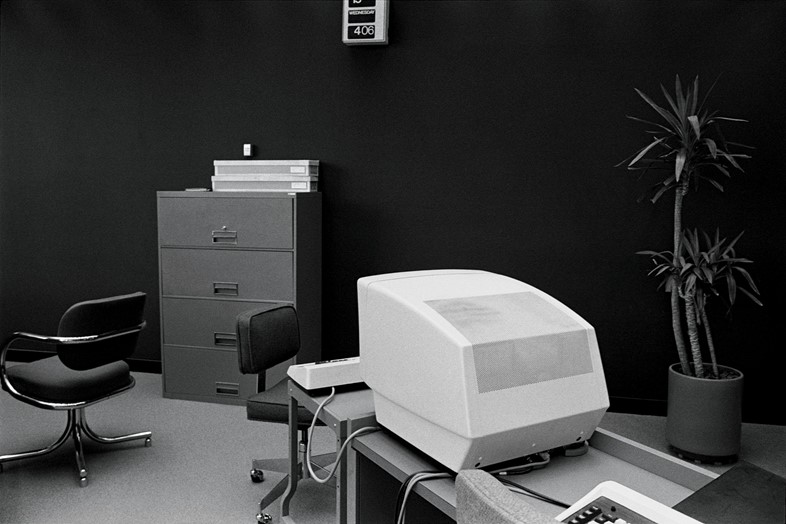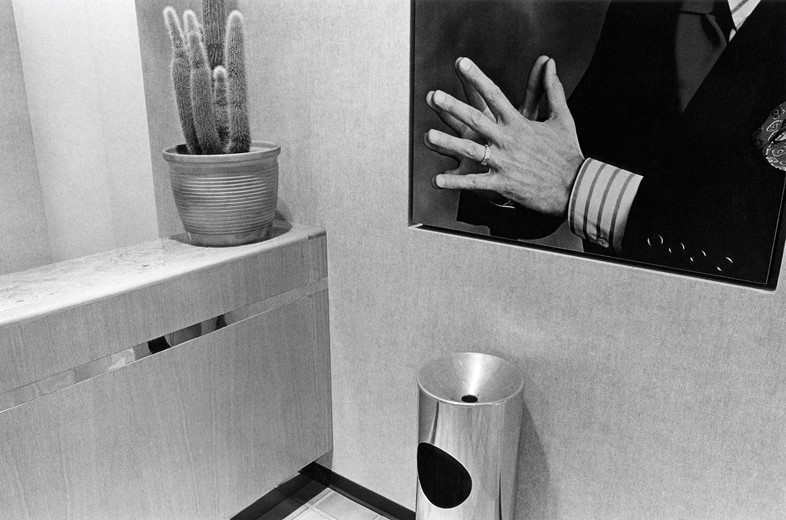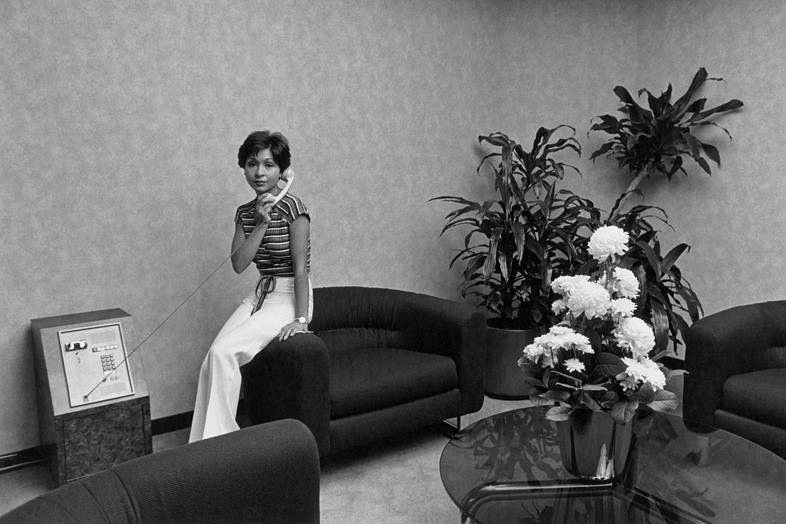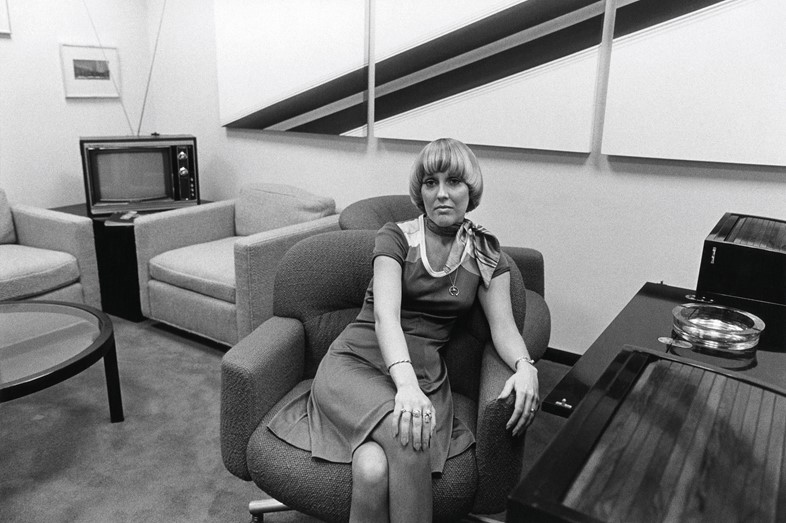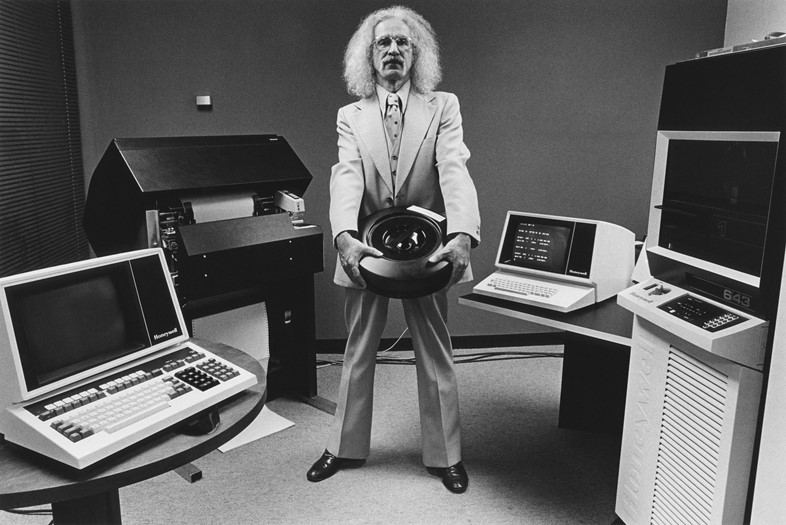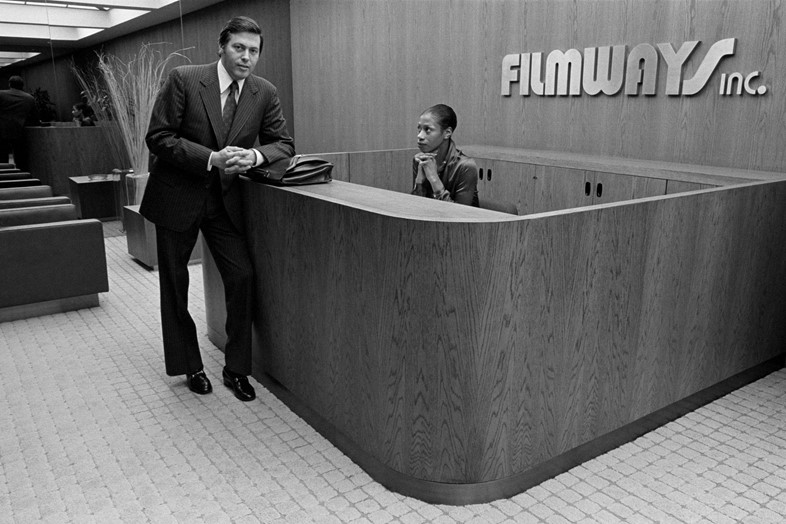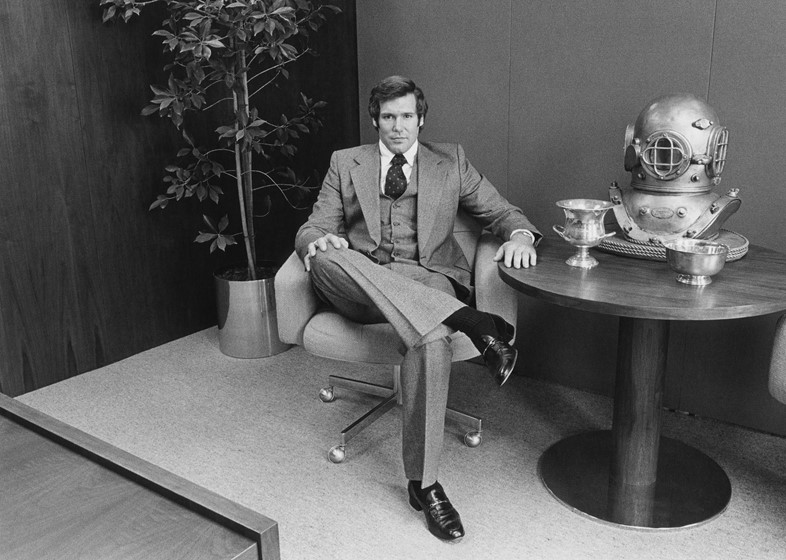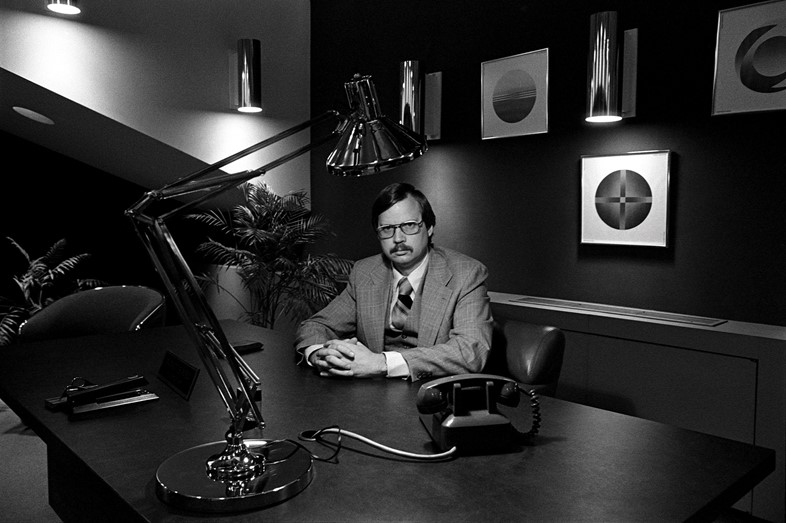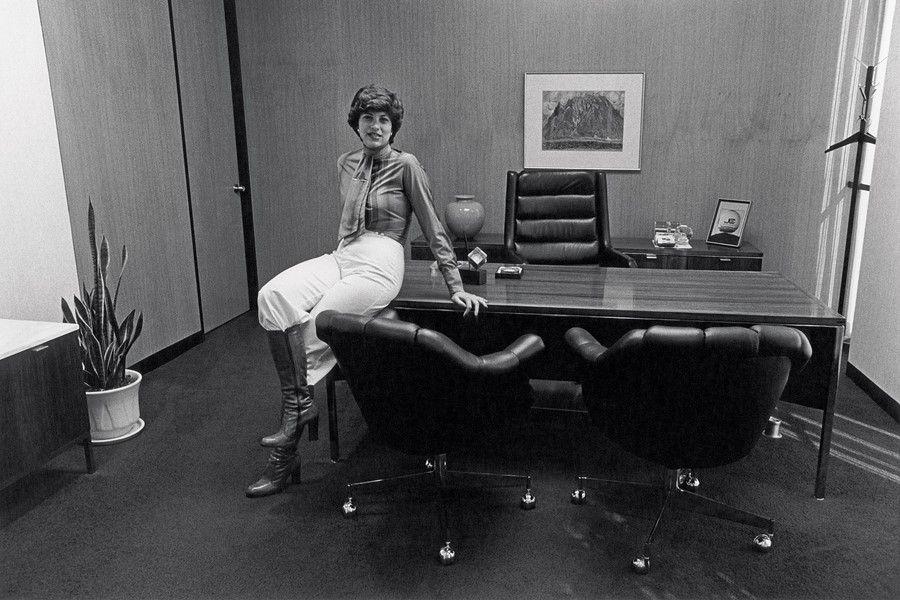It’s the late 1970s, and America’s economy is recovering rapidly from the crash of 1973. In Los Angeles, photographer Susan Ressler sets out to document the wealth and power concentrated in a small number of prestigious companies. Among them is the multi-billion dollar Bank of America and the international oil company Atlantic Richfield (ARCO). 40 years later, her photographs, which played an integral role in the 1979–80 Los Angeles Documentary Project, will be going on display in her exhibition Executive Order at the Joseph Bellows Gallery in Los Angeles.
Monochromatic shots of empty office rooms and bare executive boardrooms shine a light on California’s stark urban landscapes. Empty chairs are captured around circular wooden desks and Alexander Calder mobiles are photographed hanging above mass-produced coffee tables. The images are marked by an absence of individuality, a lack of human interaction. Even shots that depict office-workers seated at their workspaces display an atmosphere of overwhelming rigidity and unquestioned conformity. Singular figures – predominantly white men – sit in front of their computers staring into Ressler’s camera with deadpan expressions. This sterile and hallow setting, Ressler highlights, is what lies at the heart of corporate America.
In his essay on Executive Order, Mark Rice writes that Ressler’s images “provide a glimpse inside a rising economic order as they reveal the reception rooms and inner sancta of premier corporate office spaces”. This new economic order promised prosperity and wealth for all but, in reality, it perpetuated existing class, gender and racial hierarchies. Part of Executive Order’s strength lies in the powerful way in which the series draws attention to the homogenous working environments of the 1970s. The offices Ressler captures – when peopled – are overwhelmingly white, masculine spaces with little room for diversity and difference.
Ressler’s approach captures this brutal reality in a matter-of-fact manner; a topographical study of the modern American business domain. Yet, unwilling to identify with it, Ressler is careful to maintain an ironic distance from her subject matter. Whether it’s of a man holding up a piece of equipment or of a model airplane standing on top of a marble counter, each photograph signals that it is carefully and deliberately staged. It is in highlighting the artificiality of her shots that Ressler reveals her resistance to the business world; her refusal to place herself into these soulless profit-driven office spaces. Corporate and consumer culture requires our scrutiny, she seems to say, and Executive Order prompts us to critically evaluate it.
Susan Ressler, Executive Order: Images of 1970s Corporate America runs until November 30, 2018 at Joseph Bellows Gallery, Los Angeles.
